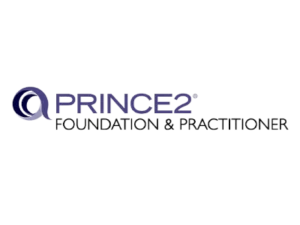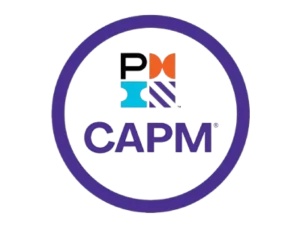PRINCE2® 7 Practitioner
One advanced project management credential that attests to a person’s proficiency with the PRINCE2 methodology is the PRINCE2 (Projects IN Controlled Environments) Practitioner certification. In order to actually apply this knowledge across a variety of project situations, it expands upon the PRINCE2 Foundation level by going deeper into the concepts, themes, and procedures of PRINCE2. It is used by industries to guarantee consistent, efficient project management procedures, enhancing productivity and decision-making. Because Certified Practitioners can customize PRINCE2 to meet the unique requirements of a project, this methodology is adaptable and widely used in a variety of project kinds and industries.
Overview
Training for the PRINCE2 7 Practitioner certification emphasizes the application of PRINCE2 techniques and develops advanced project management abilities. In addition to understanding management responsibilities and how to handle the inputs and outputs of each process, trainees learn how to modify PRINCE2 for project situations. The formulation of business cases, project planning, risk management, stage control, and product delivery management are important subjects. As a prerequisite for advanced project management positions, the course helps students demonstrate their proficiency in managing projects in a variety of situations using the PRINCE2 framework in order to pass the Practitioner test.
What you will Learn in this PRINCE2 7 Practitioner Course?
1. Understand the relationships between the roles, management products, principles, themes, techniques, and processes.
2. Apply the principles, themes, and processes to a project environment.
3. Create and assess management products.
4. Tailor PRINCE2 to different project environments.
5. Apply knowledge of PRINCE2 to run and manage projects within an organization.
6. Prepare candidates to take the PRINCE2 Practitioner examination.
Who should take up this PRINCE2 7 Practitioner Course?
– Project managers seeking advanced understanding of PRINCE2 methodology – Professionals aiming to apply PRINCE2 principles to projects
– Team leads or project coordinators looking for structured project management approaches
– Individuals holding the PRINCE2 Foundation certification pursuing higher qualifications
– Professionals wanting to improve project delivery and management skills
Our Package
1.1 Introduction
1.2 Structure of the Official Book
1.3 What is a project?
1.4 What is project management?
1.5 The project context
1.6 Features and benefits of PRINCE2
1.7 Example scenarios
2.1 Ensure continued business justification
2.2 Learn from experience
2.3 Define roles, responsibilities, and relationships
2.4 Manage by stages
2.5 Manage by exception
2.6 Focus on products
2.7 Tailor to suit the project
3.1 Context
3.2 Leading successful change
3.3 Leading successful teams
3.4 Communication
3.5 People are central to the method
4.1 The PRINCE2 practices
4.2 Applying the practices
4.3 Management products
4.4 Format of the practice chapters
5.1 Purpose
5.2 Guidance for effective business case management
5.3 Techniques
5.4 Applying the practice
5.5 Management products to support the practice
5.6 Focus of key roles for the practice
5.7 Key relationships with principles
6.1 Purpose
6.2 Guidance for effective organizing
6.3 Techniques
6.4 Applying the practice
6.5 Management products to support the practice
6.6 Focus of key roles for the practice
6.7 Key relationships with principles
7.1 Purpose
7.2 Guidance for effective planning
7.3 Techniques
7.4 Applying the practice
7.5 Management products to support the practice
7.6 Focus of key roles for the practice
7.7 Key relationships with principles
8.1 Purpose
8.2 Guidance for effective quality management
8.3 Techniques
8.4 Applying the practice
8.5 Management products to support the practice
8.6 Focus of key roles for the practice
8.7 Key relationships with principles
9.1 Purpose
9.2 Guidance for effective risk management
9.3 Techniques
9.4 Applying the practice
9.5 Management products to support the practice
9.6 Focus of key roles for the practice
9.7 Key relationships with principles
10.1 Purpose
10.2 Guidance for effective issue management
10.3 Techniques
10.4 Applying the practice
10.5 Management products to support the practice
PRINCE2® 7 Managing Successful Projects | Global Best Practice | Copyright© PeopleCert International Ltd. v
10.6 Focus of key roles for the practice
10.7 Key relationships with principles
11.1 Purpose
11.2 Guidance for effective progress management
11.3 Techniques: progress management
11.4 Applying the progress practice
11.5 Management products to support the practice
11.6 Focus of key roles for the practice
11.7 Key relationships with principles
12.1 The PRINCE2 journey
12.2 The PRINCE2 process model
12.3 Format of the process chapters
13.1 Purpose
13.2 Objectives
13.3 Context
13.4 Activities
13.5 Applying the process
13.6 Responsibilities
13.7 Application of the practices to this process
14.1 Purpose
14.2 Objectives
14.3 Context
14.4 Activities
14.5 Applying the process
14.6 Responsibilities
14.7 Application of the practices to this process
15.1 Purpose
15.2 Objectives
15.3 Context
15.4 Activities
15.5 Applying the process
15.6 Responsibilities
15.7 Application of the practices to this process
16.1 Purpose
16.2 Objectives
16.3 Context
16.4 Activities
16.5 Applying the process
16.6 Responsibilities
16.7 Application of the practices to this process
17.1 Purpose
17.2 Objectives
17.3 Context
17.4 Activities
17.5 Applying the process
17.6 Responsibilities
17.7 Application of the practices to this process
18.1 Purpose
18.2 Objectives
18.3 Context
18.4 Activities
18.5 Applying the process
18.6 Responsibilities
18.7 Application of the practices to this process
19.1 Purpose
19.2 Objectives
19.3 Context
19.4 Activities
19.5 Applying the process
19.6 Responsibilities
19.7 Application of the practices to this process
Upcoming Batch
April 20th (Weekends)
FRI & SAT (4 Weeks)
08:30 PM to 01:00 AM (CDT)
April 18th (Weekdays)
MON – FRI (18 Days)
10:00 AM to 12:00 PM (CDT)
PRINCE2® 7 Practitioner FAQs
The PRINCE2® Practitioner course provides advanced project management training, covering methodologies, themes, processes, and skills for applying PRINCE2® principles, with an aim to enhance learners’ abilities to manage projects effectively.
Post-PRINCE2 Practitioner training, expect job opportunities as project manager, coordinator. Suits various industries, advances career, enhances project management skills, and potentially leads to senior roles with higher responsibility and salary.
Prerequisite for the PRINCE2® 7 Practitioner course are:
– PRINCE2 Foundation Certification
– Project management experience recommended
– Understanding of PRINCE2 principles, themes, processes
– Some familiarity with practical business application
– Commitment to self-study and completion of pre-course work
The duration of the course 24 hours.
A laptop, decent internet speed, a Headset with microphone is required.








Reviews
There are no reviews yet.